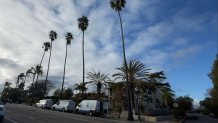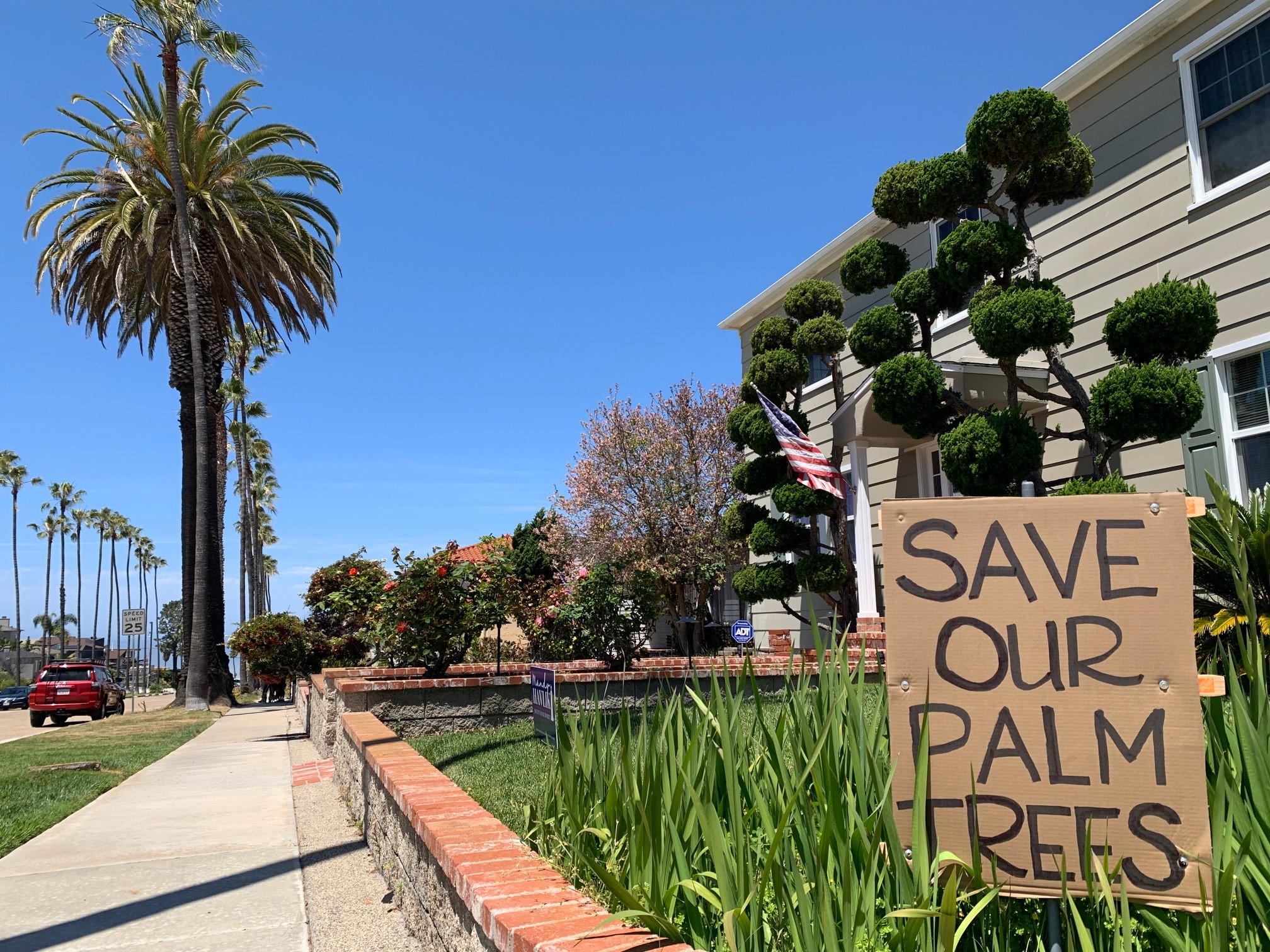The San Diego Community Forestry Advisory Board voted in support of a historic designation for an iconic stretch of trees in Mission Hills, but the city’s forester opposes protected status for the Mexican fan palms lining Sunset Boulevard, reports NBC 7’s Shandel Menezes.
Nobody seems to know when, exactly, a stretch of towering Mexican fan palms were planted along one of San Diego's most iconic streets in one of its most iconic neighborhoods, but most would agree that the gently swaying giants, visible to the east as far away as the runway of San Diego International Airport, have come to be identified with the community of Mission Hills.
So it comes as no surprise, then, that one local historian and some other concerned San Diegans were relieved, at least temporarily, last week when the trees lining Sunset Boulevard above Old Town were recommended for historic preservation.
Janet O'Dea, a founder of Mission Hills Heritage, told NBC 7 that she secured the designation for the towering palms back in 2009 but the paperwork was lost. She maintains that the trees were planted around 100 years ago at the direction of San Diego's original arborist, Kate Sessions, whose legacy to the city, among other contributions, includes the creation of Balboa Park.

Get top local stories in San Diego delivered to you every morning. Sign up for NBC San Diego's News Headlines newsletter.
"One of the first things we did is, we got our home historically designated, and we've been researching the area pretty much ever since," O'Dea told NBC 7.
According to San Diego City Council Policy 900-19, the trees, which are mostly native to Baja California, can qualify for the designation if they are "50 years or older or have a connection to some historic event, building, district, or were planted by a historically significant individual."
According to O'Dea, the trees satisfy all three criteria.
A majority of the members of the San Diego Community Forest Advisory Board agreed, 6-3, last Tuesday that the specimens of Washingtonia robusta along a several-block stretch of Sunset merited the historic designation.
Opponents of the designation included one board member who pointed out that palm trees are not even really trees but, rather, are members of the grass family, and San Diego's city forester, Brian Widener.
"We haven't had any palm trees designated as protected trees in the city under this program — which I think has been going on for about 20 years — and we have about over 400 protected trees, so we just didn't feel like there was a need to protect these palm trees," Widener said.

Widener, who did not necessarily agree that the trees were planted by Sessions back in the day, said that palms don't provide a lot of ecosystem benefits or tree canopy cover for the city, and that there are also costs associated with maintaining/trimming them every two years for public safety and tree health as well. The palm trees in question cost about $75 to trim, for a total of about $2,000 every two years.
The vote for designation by the board is only a recommendation, one that will require support from the city itself to have any teeth, and even then, the protections will be on a clock.
"My plan is to now find out who in the city is the next cog in the wheel, so to speak, to see if this actually will make it to full approval," O'Dea said.
While historically designated trees are the beneficiaries of special care by arborists, the city can only maintain them for so long. The trees are mostly in the 60-70 foot range currently, and are reaching the upper limits of what a tree trimmer in a bucket truck can safely reach — or climb to, for that matter. According to Widener, nobody knows exactly how fast a mature fan palm grows, though some estimates put it annually in the 2-3 feet range.
Trees making news in San Diego
While many experts agree that the Mexican palm fan can reach 100 feet, Widener told NBC 7 that, once the trees hit 90 feet, they can no longer be financially or safely maintained.
"… other municipalities throughout Southern California are using other kinds of equipment to get up there and maintain those trees, but that's probably not sustainable for the city of San Diego due to the size of our city and the number of Mexican fan palms that we have," Widener said.
Widener said the city and its management team will now take under advisement the board's recommendation to put the trees into protected status and the city's recommendation not to do so and will come up with a decision. Regardless of the city's decision, he said that at the current time, "There here are no plans to remove these trees."
"We try to protect every single street tree within the city regardless of conservation status," Widener told NBC 7 after the meeting.
O'Dea's concern is that if the designation is granted, that the city continue to honor that recognition.
"I started this in 2009," O'Dea said. "The paperwork got lost. It didn't get followed through, and this is a whole new board, and although I'm still here, they've all changed, so they don't have any knowledge of it, and that's a complete example of how, you know, administrations change and knowledge gets lost."
This article originally stated that Janet O'Dea was a founder of the Save Our Heritage Organisation, when she was, in fact, the founder of Mission Hills Heritage — Ed.



